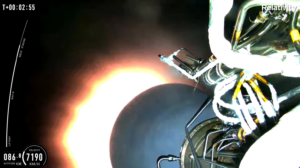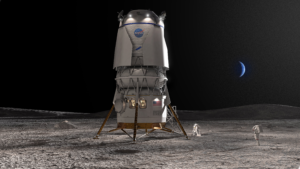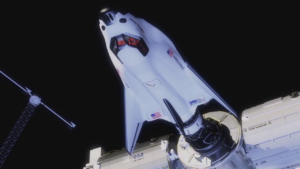
Axiom Space Awarded New Spacesuit Contract
Spacesuits are incredibly complex and important pieces of equipment that act as small spacecraft for the astronaut. For decades, NASA has been using its own suits for both the Apollo missions and much more recently spacewalks at the International Space Station. Over time, however, these suits have aged significantly and are in need of an upgrade.
That’s why the agency selected Axiom Space late last year to develop and create a new and modern spacesuit for the upcoming Artemis Moon missions. In addition to this, just yesterday they announced that Axiom had been awarded another spacesuit contract this time for the ISS. Specifically, the company is now expected to use its Artemis III lunar suit as a baseline architecture to support future spacewalks in LEO.
With this new contract comes a large sum of additional funding and more work for Axiom Space who already has a full plate. Here I will go more in-depth into this new contract, what it means for NASA’s space plans, what to expect in the coming months, and more.
New Contract

For months now Axiom Space has been working on the next generation of spacesuits for application on the Moon. By now they even have full prototypes and are working to increase production. This being said, yesterday the company tweeted pointing out, “This new @NASA spacesuit task order means development of more #AxEMUs –one for the Moon and now one for the @Space_Station!”
Taking a closer look at this deal, NASA has awarded the Houston-based company an International Space Station (ISS) Extravehicular Activity (EVA) spacesuit task order, with an initial commitment of $5 million and a potential value of $142 million over four years, to modify its Artemis III lunar spacesuit design for advancing NASA’s ISS spacewalking capabilities.
This is the second spacesuit task order to be awarded to Axiom Space by NASA, the first being the $228 million task order in 2022 to develop the lunar spacesuit for the Artemis III mission back to the Moon. The new NASA task order further enables Axiom Space to take advantage of its plans to use a single, foundational architecture to complete the designs of the two spacesuits in parallel, one for the ISS and one for the lunar surface. The Axiom Space low-Earth orbit (LEO) spacesuit effort is already underway for use on the world’s first commercial space station, Axiom Station, being designed to serve the next generation of private space explorers.
“We are excited to add our orbital spacesuits as an option for NASA,” said Mark Greeley, Axiom Space EVA Program Manager. “The team is truly humbled to be a provider of spacesuits for the NASA Artemis missions and now a developer of spacesuits for future ISS missions. Aligning our spacesuit architecture for commercial LEO, lunar, and ISS is proving to be of great benefit in terms of streamlining designs and continuing to deliver the best value to NASA, while serving our future commercial astronauts on Axiom Station by the end of the decade.”
Similar to the Artemis III spacesuit, the Axiom Space ISS suit will be built to accommodate a wide range of crew members and provide increased flexibility and specialized tools. The design includes life support systems, pressure garments, and power avionics and communication. The Axiom Space team will offer design, certification and hardware to support EVA systems training and real-time operations support to NASA, among other services. “Imagining astronauts performing EVAs outside the ISS wearing Axiom Space spacesuits, borne from the original NASA design, would honor everyone who ever worked on the NASA suits of the past and those who are working on the NASA spacesuits of the future,” said Russell Ralston, Axiom Space EVA Deputy Program Manager.
Both spacesuit task orders awarded to Axiom Space fall under NASA’s Extravehicular Activity Services (xEVAS) contract, which enables Axiom Space to compete for contracts that will provide a full suite of capabilities for NASA’s spacewalking needs during the period of performance through 2034. The milestone-based xEVAS contract has a combined maximum potential value of $3.5 billion for all task order awards. In this case, NASA saw an opportunity to award a company already working on the spacesuits for both the Moon and low Earth orbit. Something we can expect to see more updates on in the near future.
Modern Spacesuit

While both the spacesuits being created for the Moon and LEO will share some similarities, there will also be quite a few differences. The new Axiom Extravehicular Mobility Unit (AxEMU) spacesuit will provide astronauts advanced capabilities for space exploration while providing NASA with commercially developed human systems needed to access, live and work on and around the Moon. The advanced spacesuits ensure astronauts are equipped with high-performing, robust equipment and are designed to accommodate a wide range of crew members.
Building off NASA’s Exploration Extravehicular Mobility Unit (xEMU) spacesuit design, the Axiom Space spacesuits are created to provide increased flexibility, greater protection to withstand the harsh environment, and specialized tools to accomplish exploration needs and expand scientific opportunities. Using innovative technologies and a flexible design, these spacesuits will enable more exploration of the lunar surface than ever before.
For this application, mobility and agility are core to the AxEMU design. Utilizing innovative soft and hard joints for an increased range of motion will enable astronauts to walk on the Moon more effortlessly, perform more precise geological and scientific tasks, and translate on space stations easier, all while maximizing comfort.
In reality, spacesuits are much more than a set of clothes astronauts wear. A fully equipped spacesuit used during spacewalks is actually a miniature spaceship shaped like a human body that protects the astronaut from the dangers of being outside a vehicle while in space or on the Moon. Spacewalking astronauts face radiation, dust, debris, and extreme temperatures. Temperatures on spacewalks may vary from as cold as minus 250 degrees Fahrenheit to as hot as 250 degrees in the sunlight. The suits provide the proper pressure for the body and supply astronauts with water to drink and oxygen to breathe.
The two main parts of a spacewalk spacesuit are the pressure garment and the life support system. The pressure garment is the human shaped portion of the spacesuit that protects the body and enables mobility. The primary components of the pressure garment are the cooling garment, upper torso, lower torso and helmet.
For NASA, the flexible parts of the suit are made from as many as 16 layers of material. The layers perform different functions, from keeping oxygen within the spacesuit to protecting from space dust. Closest to the astronaut’s skin, the cooling garment makes up the first three layers. On top of this garment is the bladder layer that is filled with gas to create proper pressure for the body and holds in the oxygen for breathing. The next layer holds the bladder layer to the correct shape around the astronaut’s body. The ripstop liner is a tear-resistant layer. The next several layers are insulation and act like a thermos to help maintain the temperature inside the suit. The white outer layer reflects heat from the sunlight and is made of a fabric that blends three kinds of threads. One thread provides water resistance, another is the material used to make bullet-proof vests, and the third component is fire-resistant. Some suits are plain white and some have stripes to help tell one spacewalker from another.
At the very top, the helmet on spacesuits built for spacewalks serves as a pressure bubble and is made of strong plastic to keep the pressure of the suit contained. It also has a ventilation system that provides astronauts with oxygen. Helmets also contain a small foam block that astronauts can use to scratch their noses. Outside of this bubble is a protective visor that keeps the pressure bubble from getting bumped or scratched. On top of the protective visor are the sun visor and sun shades. The sun visor has a special gold coating that works like the astronaut’s sunglasses. Together, the movable sun visor and sun shades protect the astronaut from the sun’s strong rays, while still allowing a clear visual field. The helmet on the suits that will be worn for Artemis missions will feature a quick-swap protective visor that protects against the abrasive dirt of planetary bodies. The helmet for these new suits also features an elliptical shape that provides a better view of the ground around the spacewalker’s feet.
On the back of the spacesuit is a backpack that houses the supplies and equipment to make the suit work. This backpack contains the oxygen that astronauts breathe and that pressurizes the suit. A regulator in the backpack keeps the suit at the correct pressure. The backpack also contains water for the cooling garment, a chiller to cool the water, and a pump that circulates the chilled water. These are just some of the necessary features that Axiom is working on to create a modern and capable version of for both application on the Moon, and in LEO.
Conclusion
Axiom Space was just awarded another contract to create spacesuits for NASA. Instead of missions to the Moon NASA wants spacesuits capable of replacing the agency’s aging options. We will have to wait and see how it progresses and the impact it has on the space industry.



